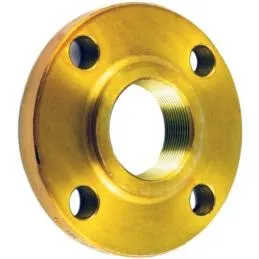-
Cangzhou Yulong Steel Co., Ltd.
-
Phone:
+86 13303177267 -
Email:
admin@ylsteelfittings.com
- English
- Arabic
- Italian
- Spanish
- Portuguese
- German
- kazakh
- Persian
- Greek
- French
- Russian
- Polish
- Thai
- Indonesian
- Vietnamese
- Zulu
- Korean
- Uzbek
- Hindi
- Serbian
- Malay
- Ukrainian
- Gujarati
- Haitian Creole
- hausa
- hawaiian
- Hebrew
- Miao
- Hungarian
- Icelandic
- igbo
- irish
- Japanese
- Javanese
- Kannada
- Khmer
- Rwandese
- Afrikaans
- Albanian
- Amharic
- Armenian
- Azerbaijani
- Basque
- Belarusian
- Bengali
- Bosnian
- Bulgarian
- Catalan
- Cebuano
- China
- China (Taiwan)
- Corsican
- Croatian
- Czech
- Danish
- Esperanto
- Estonian
- Finnish
- Frisian
- Galician
- Georgian
- Kurdish
- Kyrgyz
- Lao
- Latin
- Latvian
- Lithuanian
- Luxembourgish
- Macedonian
- Malgashi
- Malayalam
- Maltese
- Maori
- Marathi
- Mongolian
- Myanmar
- Nepali
- Norwegian
- Norwegian
- Occitan
- Pashto
- Dutch
- Punjabi
- Romanian
- Samoan
- Scottish Gaelic
- Sesotho
- Shona
- Sindhi
- Sinhala
- Slovak
- Slovenian
- Somali
- Sundanese
- Swahili
- Swedish
- Tagalog
- Tajik
- Tamil
- Tatar
- Telugu
- Turkish
- Turkmen
- Urdu
- Uighur
- Welsh
- Bantu
- Yiddish
- Yoruba

Nov . 17, 2024 08:19 Back to list
astm sa 106
Understanding ASTM SA 106 A Comprehensive Overview
ASTM A106 is a critical standard established by ASTM International (formerly known as the American Society for Testing and Materials), which outlines the specifications for seamless carbon steel pipes primarily used for high-temperature and high-pressure service. This standard is pivotal in industries such as oil and gas, power generation, and chemical processing, where the performance and safety of piping systems are paramount.
Standard Overview
ASTM A106 covers three grades of carbon steel pipes Grade A, Grade B, and Grade C. Each grade varies in chemical composition and mechanical properties, allowing for specific applications depending on the required strength and temperature limitations. Most commonly, Grade B is used due to its balanced combination of strength and ductility, making it ideal for general applications.
Chemical Composition
The standard sets forth specific requirements for the chemical composition of the steel used in these pipes. This typically includes elements such as carbon, manganese, phosphorus, and sulfur. For instance, the maximum carbon content for Grade B is usually around 0.30%, which aids in maintaining the pipe’s strength while ensuring excellent weldability.
Mechanical Properties
Understanding ASTM SA 106 A Comprehensive Overview
Applications
astm sa 106

ASTM A106 pipes are specifically designed for use in applications where the pipe must operate at elevated temperatures and pressures. Common applications include
1. Pipelines Transporting steam, gas, and other fluids at high temperatures and pressures. 2. Power Plants Used in boiler systems and heat exchangers where robust and reliable piping is essential. 3. Refineries Handling various hydrocarbon fluids, requiring pipes that can endure challenging conditions.
Manufacturing Process
The manufacturing process of ANSI A106 pipes is primarily the seamless method. This method involves extrusion, which creates pipes without any welded seams, enhancing the strength and integrity of the pipe. The seamless design minimizes the risk of failure at joints, making these pipes suitable for high-stress applications.
Test Requirements
To ensure compliance with ASTM A106, pipes must undergo rigorous testing. These tests include
- Hydrostatic Testing Pipes are subjected to high-pressure water tests to ensure they do not leak. - Non-Destructive Testing (NDT) Techniques such as ultrasonic testing may be applied to identify any internal flaws. - Chemical and Mechanical Property Testing Samples from the production batch undergo tests to verify the chemical composition and mechanical performance.
Conclusion
In summary, ASTM A106 is a vital standard that ensures the reliability and performance of seamless carbon steel pipes in high-pressure and high-temperature applications. By adhering to the specifications outlined in this standard, manufacturers and users can ensure the safety and effectiveness of their piping systems. As industries continue to evolve, the demand for robust, durable, and efficient piping solutions will only grow, and standards like ASTM A106 will remain crucial in meeting these challenges. Understanding and implementing ASTM A106 ensures that the infrastructure supporting critical processes can withstand the rigors of operational demands, contributing to the overall safety and efficiency of industrial operations.
Latest news
-
ANSI 150P SS304 SO FLANGE
NewsFeb.14,2025
-
ASTM A333GR6 STEEL PIPE
NewsJan.20,2025
-
ANSI B16.5 WELDING NECK FLANGE
NewsJan.15,2026
-
ANSI B16.5 SLIP-ON FLANGE
NewsApr.19,2024
-
SABS 1123 FLANGE
NewsJan.15,2025
-
DIN86044 PLATE FLANGE
NewsApr.19,2024
-
DIN2527 BLIND FLANGE
NewsApr.12,2024
-
JIS B2311 Butt-Welding Fittings LR/SR 45°/90° /180°Seamless/Weld
NewsApr.23,2024











